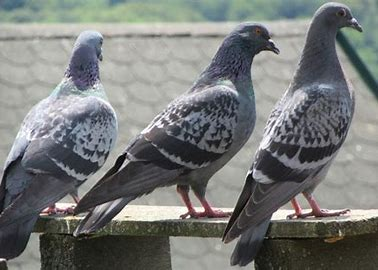Keeping A Pigeon As A Pet
Introduction
Here’s the truth: keeping a pigeon as a pet is not that hard. In fact, if you’re willing to put in the time and effort, it can be one of the most rewarding experiences for your family! If you’re going to get started with your new friend, though, there are some things that need attention before bringing home. The first thing on this list is finding out where your local avian veterinarian practices so that any medical emergencies can be handled quickly by someone who knows what they’re doing!
1. Pigeons are social creatures.
> Pigeons are flock animals and prefer to be around other pigeons. They are very social and like to stay close to their mate, young, and flock.
> Pigeons can be kept together in pairs or groups, but it is important that they all have access to food, water, perches and nest boxes at all times. If you house more than one pair together it will help keep them calm and less aggressive towards each other. However, if you do not provide enough space for them then there may be problems with territorial behaviour between pigeons within the same cage or loft area. In this case it is best not to house males together unless you have plenty of space set aside just for him alone (for example a separate shed).
2. Routine is key to successful pet-pigeon ownership.
- Routine is key to successful pet-pigeon ownership.
Pigeons are creatures of habit, and they will thrive in an environment that is consistent and predictable. If you don’t provide a routine for your pigeons, they will get bored and frustrated, which can lead to stress or even health issues such as feather plucking. When you create a daily routine for them (which we will go over in detail later), it’s important that each part of your plan be consistent from day to day so that your pigeons know what’s coming next and can trust their life with you!
3. Pigeons require a steady diet of seeds.
Pigeons are primarily grain-eating birds, and they need to have a steady diet of grains and seeds in order to maintain their health. While the exact composition of a pigeon’s diet depends on the species you have, you should provide them with a variety of different grains and seeds in order to ensure that they get all the nutrients that they need for optimal health.
4. Proper pigeon housing is essential for a healthy pet pigeon.
Pigeons need to be kept in a coop. They love to fly and enjoy the outdoors, but they also need a place to rest and relax. Your pigeon will need room for perching, nesting and sleeping.
The coop should be high enough off the ground so that predators cannot get in—ideally at least five feet above the ground. It should also have plenty of ventilation, which is important for reducing the temperature inside the coop during hot weather and keeping it cool when it’s cold outside. A large door or window on one side allows you access to your pets whenever necessary (such as cleaning out their feeder).

5. A healthier pigeon is a happier pigeon.
- A healthier pigeon is a happier pigeon.
A healthy pigeon is an active and playful one, so it’s important to provide your pet with plenty of space to move around in its cage. This can be done by giving them more room to play with their toys or turning the cage into their own personal playground. A healthy diet and clean water also help keep pigeons happy and active, promoting training opportunities that build your bond together as owner and companion bird.
6. You might have to bring a new pet pigeon home, or introduce your current pets if you already have a couple of pigeons living with you in the coop, but the chances are that your pet will get along with the newcomer in no time at all! This isn’t just true for birds, either; it’s important to make sure that any new members of your family get along with each other well before bringing them into your house permanently! Who knows – maybe your dog will even like having a new friend around!
Introducing a new pet to your current pets can be a little tricky, but there are several steps that you can take to make sure that the transition goes smoothly.
First, make sure that you introduce them slowly and carefully. You want both animals to feel comfortable with one another right away; if they don’t, then they may never really get along! For example: if you were bringing home two new pigeons at once (which is something our experts wouldn’t recommend), it would probably be best not to force them into the same cage or space until they’ve had time to get used to each other’s scent.
Second, make sure both pets are healthy before adding a third one into the mix–if one of them has any sort of illness or infection already present when introducing a new companion, chances are good that those symptoms could spread quickly among all three animals! This isn’t always an issue; depending on how much contact there is between these types of creatures during normal daily activities such as grooming sessions or feeding times (if any), then it might be safe enough for all three pets without worrying too much about catching something from each other.”
Conclusion
We hope this article has given you the confidence and inspiration to bring home a new feathered friend. A pet pigeon isn’t for everyone, but if you’ve read this far then we think you might just be the kind of person who can help them thrive!